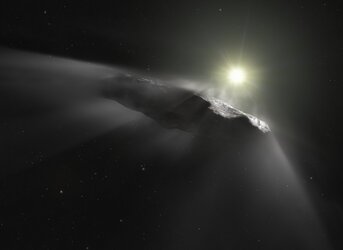First ever data for microparticle impact ejecta collated
Space debris and micrometeoroids pose a significant risk to space missions. The sheer number of these microparticles in orbit mean that the interaction between them and spacecraft is unavoidable.
But the amount of momentum they transfer to these spacecraft when they hit is still relatively unknown.
For many modern spacecraft, the pointing requirements of missions are very strict, e.g. the LISA mission which requires to maintain a laser link over 2.5 million km between the three satellites in the constellation, this means that even attitude disturbances in the order of arcseconds can cause interruption of science. Another concern for space missions is the total angular momentum transferred to the spacecraft over a long mission duration, especially spacecraft with fuel-based Attitude and Orbit Control Systems (AOCS).
But a new TDE activity with HTG - Hyperschall Technologie Goettingen, Germany, called MIRAD (Micro-Particle Impact Related Attitude Disturbance), has developed the first ever model using experiment data of the ejected fragments from microparticle impacts.
The MIRAD activity aimed to develop an engineering tool to predict the dynamic attitude disturbances of spacecraft based on a given impacting flux of microparticles.
But in order to develop this tool, first a new and improved momentum transfer model had to be developed taking into account realistic hypervelocity impacts.
To get this realistic impact data, hypervelocity impact experiments were performed to increase our understanding of how spacecraft surface materials ejects material.
Particles ranging from 0.5-3mm were fired at targets mimicking spacecraft at speeds of up to 7.4km/s while cameras tracked the ejected fragments. The momentum transferred to the target was measured using a ballistic pendulum and the fragments ejected from the target surface were caught for later examination.
Twenty six of these experiments were performed at the Fraunhofer EMI light-gas gun facility.
From these measurements, the mass, velocity and angular distributions of the fragments were determined. With this extensive and comparatively complex diagnostics set-up, the experiments have produced unprecedented and accurate data of the fragment cloud.
No similar measurements are available in public literature.
The activity worked over three phases. First, the hypervelocity impact tests were conducted. But then software had to be developed and validated to turn this data into a useable model.
The tool was validated using operational data for three ESA spacecraft: Sentinel-1A, GAIA and LISA Pathfinder.
Next, the activity plans to verify the model for impacts on aluminium surfaces, which would require its own dedicated experimental impact test campaign.
T205-038EP Mirco-particle impact related attitude disturbances, closed in March 2020.















 Germany
Germany
 Austria
Austria
 Belgium
Belgium
 Denmark
Denmark
 Spain
Spain
 Estonia
Estonia
 Finland
Finland
 France
France
 Greece
Greece
 Hungary
Hungary
 Ireland
Ireland
 Italy
Italy
 Luxembourg
Luxembourg
 Norway
Norway
 The Netherlands
The Netherlands
 Poland
Poland
 Portugal
Portugal
 Czechia
Czechia
 Romania
Romania
 United Kingdom
United Kingdom
 Slovenia
Slovenia
 Sweden
Sweden
 Switzerland
Switzerland

























